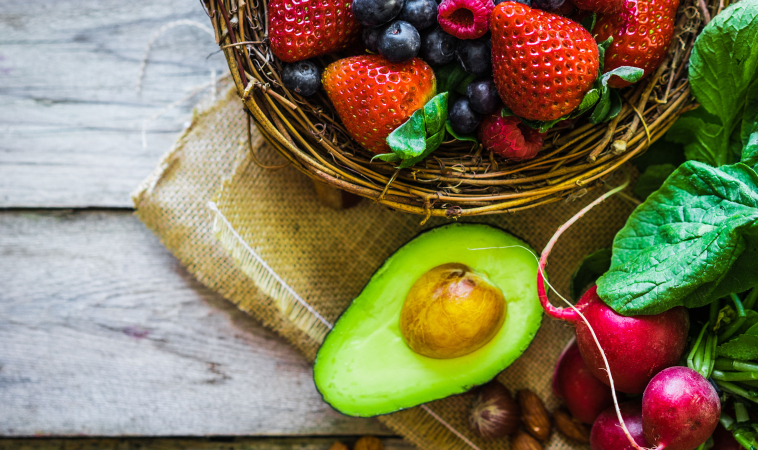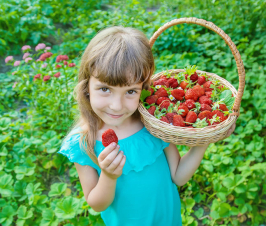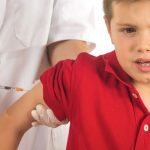All living organisms are constantly exposed to stress derived from internal and external sources. Reactive species (RS) that come from oxygen are ROS and reactive species derived from nitrogen are RNS. Free radicals are generated from oxidative stress and play an important role in the development of organ damage and aging. Both ROS and RNS belong to the “free radicals” family and are constituted by various forms of activated oxygen or nitrogen. For short periods of time oxidative stress is helpful as it’s involved in the healing response, though long term it is capable of changing cells and inducing cellular damage. RS are continuously produced during normal bodily events such as healing and immune, but can become chronic when low levels of antioxidant defense mechanisms are present. A greater level of RS than antioxidants and can lead to modifications in cellular membrane or intracellular molecules and, eventually, to genetically linked disorders and even cancer.3
Antioxidants
Antioxidants are defined as natural or synthetic substances that may delay, prevent or heal cellular damage by reducing ROS and RNS.1Antioxidants are naturally found in many plant foods and are also available as complexes or individual nutrients in supplements form. The FDA maintains the only reliable antioxidant claims come from Vitamin A and Beta Carotene with a standardized level of Vitamin A, Vitamin C and Vitamin E.2 Even so, some people are shying away from antioxidants at the advice of their doctor and some research showing that synthetic or food based antioxidants have hazardous health effects on some populations.2 What is not generally considered by mainstream nutrition, are the food sources of antioxidants.
Superfoods are aptly titled. But just what those reasons are remains a mystery. Deconstructing the nutritional value of foods remains very difficult as nutritional claims, daily value and RDAs are outdated and limited in terms of representations. Just as we do not truly know what is in breast milk, we do not understand or acknowledge all the healing properties of plant based foods. We know we have to consume them, we know we have to consume more of them, we even know we should consume up to 9 servings per day if we plan on acquiring a long health span. But many of us still do not understand why.
Phytochemicals
Phytochemicals (derived from plants) consumed through daily diet or plant-derived dietary supplements, have been shown to have antioxidant effect by preventing free radical-related diseases counteracting cell oxidative stress.4 This is a main reason why eating fruits and veggies are so important. However, it is now considered that the beneficial effects of these phytochemicals on the body are unlikely to be explained by their nutrient density alone. Dozens of plant-based antioxidants exhibit hormeticproperties, acting as ‘low-dose stressors’ that prepare cells to resist more severe stress. A wild or organically-grown plant is more medicinally valuable because it has had to fend for itself through cold snaps or when a pest takes a bite of it. These low-level stressors actually stimulate the plant to produce more protection mechanisms. And when we eat them, they do the same for us. Studies suggest low doses of these phytochemicals activate cell signaling pathways where high doses are cytotoxic, which explains why more is not necessarily better.3It may be a small amount in the daily diet that is most beneficial to turn on our own body’s endemic antioxidants namely Glutathione, Alpha-lipoic acid, Coenzyme Q, Ferritin, Uric acid, Bilirubin, Metallothioneine, L-carnitine and Melatonin.3Each of these antioxidants, your own body produces in diminishing quantities with age. A research study looked into the adaptive responses induced by the most known plant hormetic antioxidants – sulforaphane from broccoli, resveratrol from red grapes, curcumin from turmeric, flavonoids from the healthiest fruits and vegetables, green tea catechins and how they are specifically helpful in preventing degenerative disease and even cancer via activation of endemic antioxidant pathways.4
Phytochemicals thereby not only provides nutrition themselves but further activate internal antioxidant pathways to increase our body production of anti-aging antioxidants such as the much discussed glutathione and CoQ10.
Another study looked at the variety of phytochemical antioxidants supplements that have demonstrated death of unhealthy brain and neural cells: (1) flavonoid polyphenols like epigallocatechin 3-gallate (EGCG) from green tea and quercetin from apples; (2) non-flavonoid polyphenols such as curcumin from tumeric and resveratrol from grapes; (3) phenolic acids or phenolic diterpenes such as rosmarinic acid or carnosic acid, respectively, both from rosemary; and (4) organosulfur compounds including the isothiocyanate, L-sulforaphane, from broccoli and the thiosulfonate allicin, from garlic. All of these compounds are generally considered to be antioxidants but not regarded by the FDA as such exhibit potential therapeutic value in neurodegenerative diseases.5They may be classified as antioxidants for one of two reasons – they directly scavenge free radicals or they indirectly increase endogenous cellular antioxidant defenses (for example, via activation of the nuclear factor transcription pathway, Nrf2). This means that these superfoods and super-nutrients have the ability to activate our own body’s antioxidants defense mechanism, or anxioxidant pathways. Alternative mechanisms of action have also been suggested for the neuroprotective effects of these compounds such as modulation of signal effects on gene expression.3
Phytonutrients
Here is the list of phytonutrients and their corresponding superfoods that have not been given an RDA or daily value recommendation but are absolutely proven for activating our own body’s antioxidant pathways, thereby lending further health value than any single antioxidant alone. These nutrients have an anti-aging ability by being able to activate antioxidant genes that stimulate our body’s own internal antioxidant protection mechanism. These protection mechanisms allow the cell to eject toxic substances and waste products, kill bad and cancerous cells, methylate the DNA for longevity and proper division, and improve the length of the cell cycle. If you eat these nutrients daily, your body will love you, even down to the genetic level.
The future of nutritional medicine is here! Do not wait to include these nutrients into your diet on a regular basis. There exists potential in superfoods to activate The NRF2 Antioxidant Nutrigenomic Pathway:6
- Flavinoids found in red, blue, purple berries, red and purple grapes and Red wine.
- Flavanols found in teas (green, black and oolong white), chocolate (choose dark chocolate for lower sugar content and higher catechin content!), grapes, berries and apples.
- Proanthocyanidins found in chocolate, apples, berries, red grapes and red wine.
- Flavanones found in Citrus.
- Flavonols found in yellow onions, scallions, kale, broccoli, apples, berries and teas.
- Flavonesfound in parsley, thyme, celery, and hot peppers.
- Isoflavones found in Soybeans Legumes.
- Non-flavonoid Polyphenols found in Tumeric.
- Resveratrol found in Grapes.
- Phenolic acids or Phenolic diterpenes found in Rosemary.
- Organosulfur compounds found in Cruciferous or Brassica vegetables – Sprouts of Broccoli & Cauliflower (highest content), kale, broccoli, brussel sprouts, cabbage, cauliflower, bok choy, collards, Chinese broccoli and Broccoli rabe, kohl rabi, mustard, turnip, radish, arugula and watercress.
- Thiosulfonate found in Garlic – Aged garlic is fermented garlic that converts allicin to S-allylcysteine & S- allylmercaptocysteine, which are more bioavailable, water soluble and stable.
- Cinnaminic aldehyde found in Cinnamon.
For more from Dr. Millie, tune into her talk on chemical Obesogens and Cancer Prevention at The Natural Cancer Prevention Summit.
 Dr. Millie Lytle is a Naturopathic Doctor and the founder of Nat Med Coach. She has a passion for finding and filling gaps of care in the health care system. She holds her license in the District of Columbia, practices virtually and in New York City. Originally from Canada, Dr. Millie earned her undergraduate degree from the University of Toronto, her doctorate from the Canadian College of Naturopathic Medicine and her Masters in Public Health from the Hamburg School of Applied Sciences in Germany. She is a published researcher, avid public speaker and author of Eating for Meaning. She is the director of Nat Med Coach and the founder of Virtual Health Club – providing supervised self-care to help you stay out of the doctor’s office. She sits on the Medical Advisory Board for the School of Applied Functional Medicine. Dr. Millie specializes in helping those address chronic fatigue with mind-body-spiritual well-being.
Dr. Millie Lytle is a Naturopathic Doctor and the founder of Nat Med Coach. She has a passion for finding and filling gaps of care in the health care system. She holds her license in the District of Columbia, practices virtually and in New York City. Originally from Canada, Dr. Millie earned her undergraduate degree from the University of Toronto, her doctorate from the Canadian College of Naturopathic Medicine and her Masters in Public Health from the Hamburg School of Applied Sciences in Germany. She is a published researcher, avid public speaker and author of Eating for Meaning. She is the director of Nat Med Coach and the founder of Virtual Health Club – providing supervised self-care to help you stay out of the doctor’s office. She sits on the Medical Advisory Board for the School of Applied Functional Medicine. Dr. Millie specializes in helping those address chronic fatigue with mind-body-spiritual well-being.
References:
- Antioxidants retrieved from National retrieved from http://www.nlm.nih.gov/medlineplus/antioxidants.html
- FDA Guidance for Industry on Definition for “Antioxidant” for Use in Nutrient Content Claims for Dietary Supplements and Conventional Foods – Retrieved from http://www.fda.gov/Food/GuidanceRegulation/GuidanceDocumentsRegulatoryInformation/LabelingNutrition/ucm063064.htm 3. Are Antioxidants Killing You from Media Relations, Inc. retrieved rom http://www.publicity.com/press-releases/are-antioxidants-killing-you/
- Rizzo AM, Berselli P, Zava S, Montorfano G, Negroni M, Corsetto P, Berra B. Endogenous antioxidants and radical scavengers. Adv Exp Med Biol. 2010;698:52-67.
- Speciale A, Chirafisi J, Saija A, Cimino F. Nutritional antioxidants and adaptive cell responses: an update. Curr Mol Med. 2011 Dec;11(9):770-89.
- Kelsey NA, Wilkins HM, Linseman DA. Nutraceutical antioxidants as novel neuroprotective agents. Molecules. 2010 Nov 3;15(11):7792-814.
- Foods That Turn On The NRF2 Antioxidant Nutrigenomic Pathway source retrieved from http://stpetehw.com/nutrigenomic-foods-super-foods-on-steroids/

















